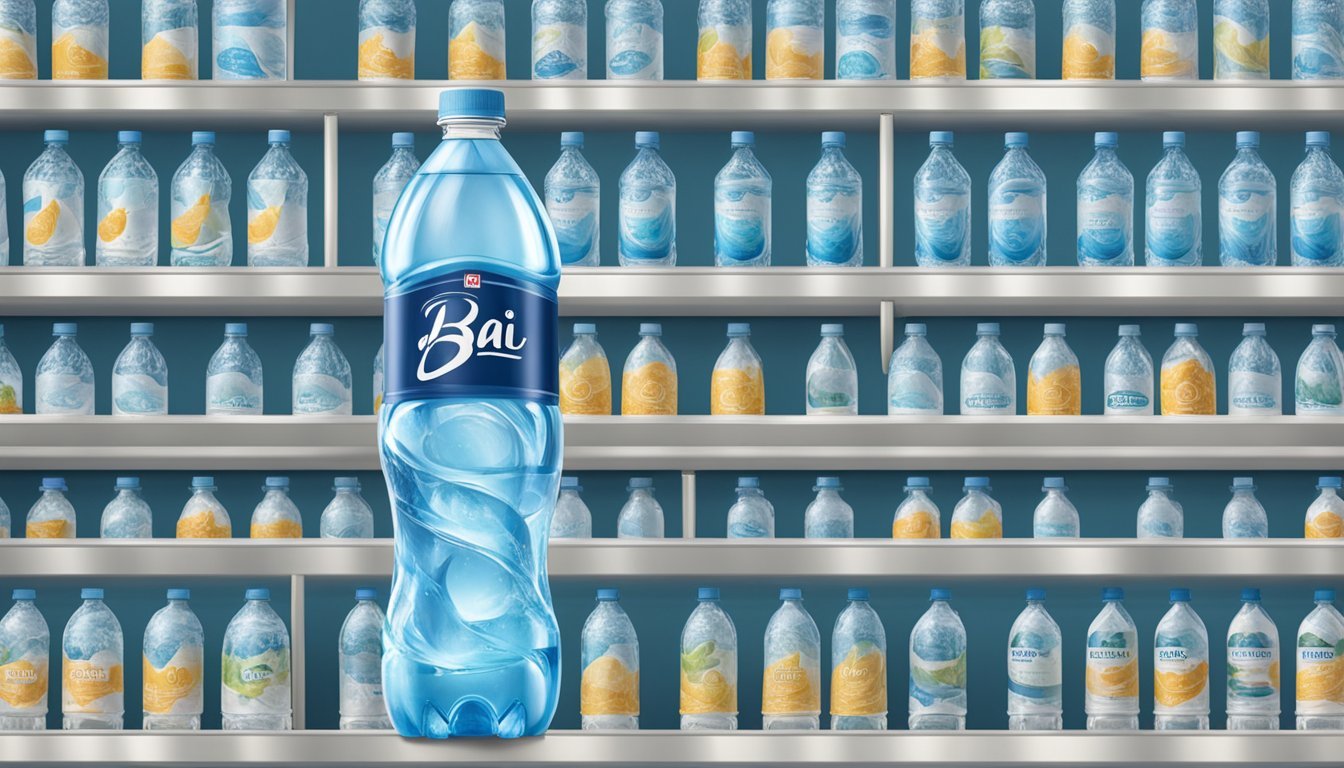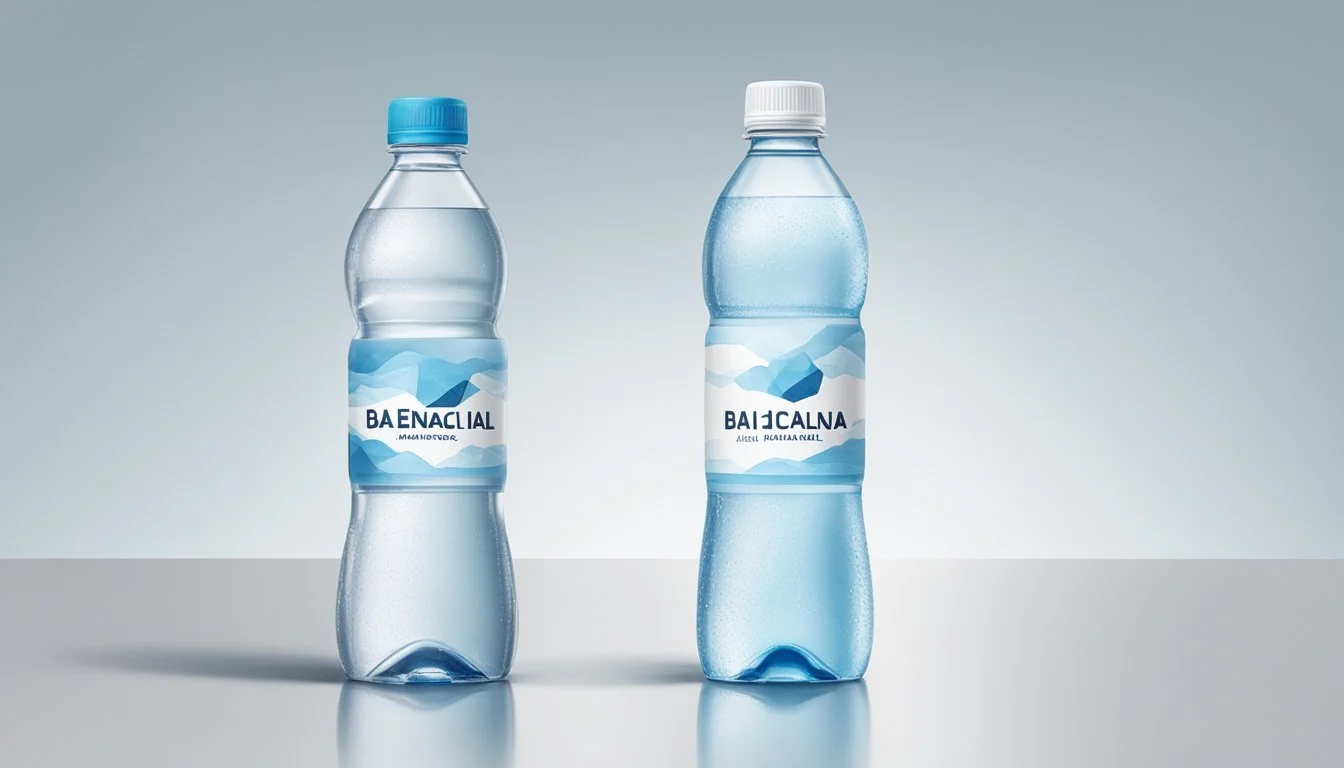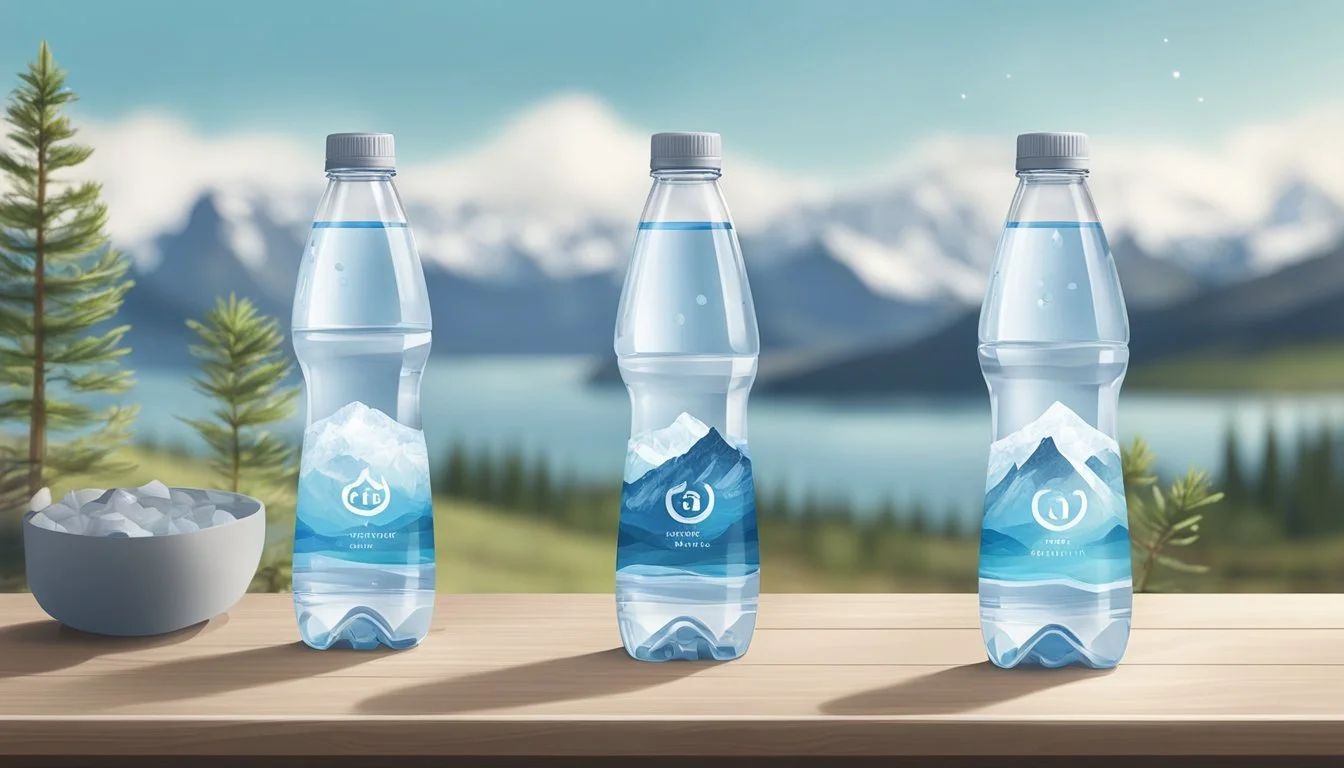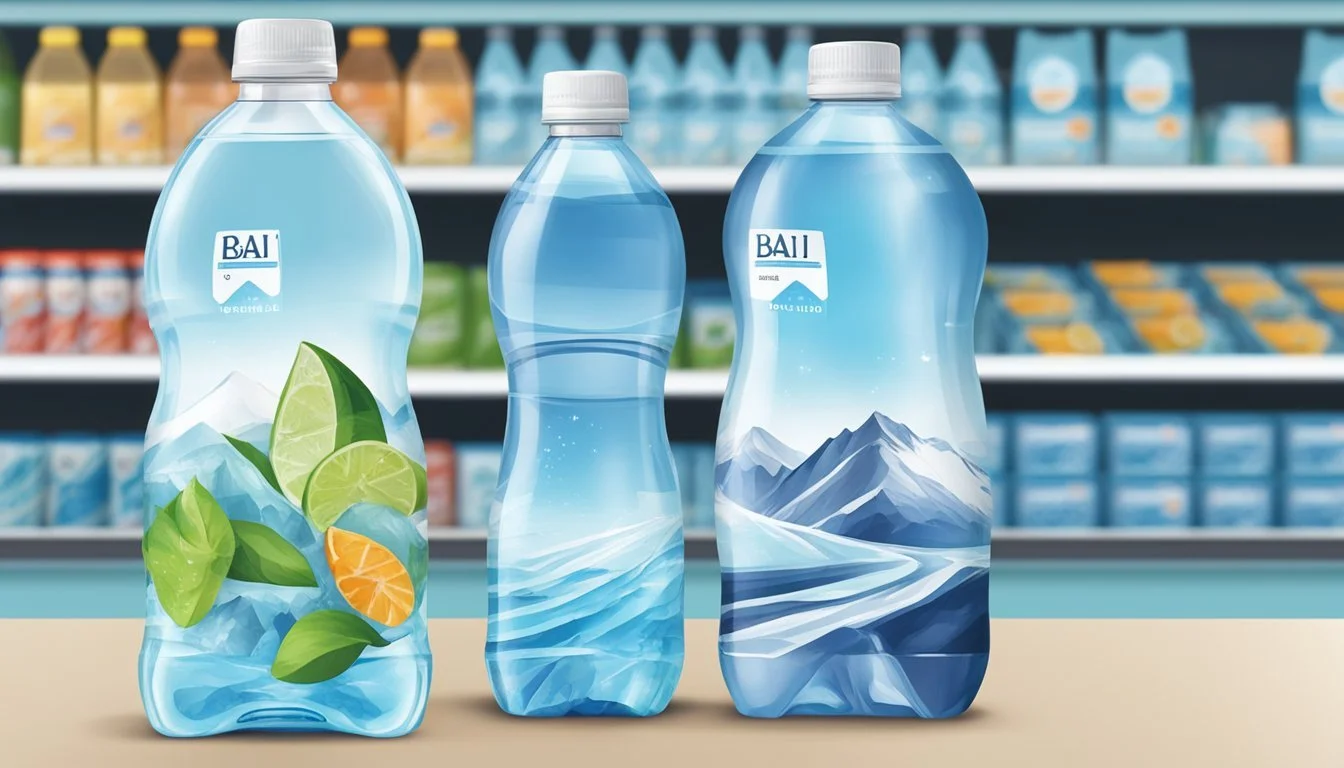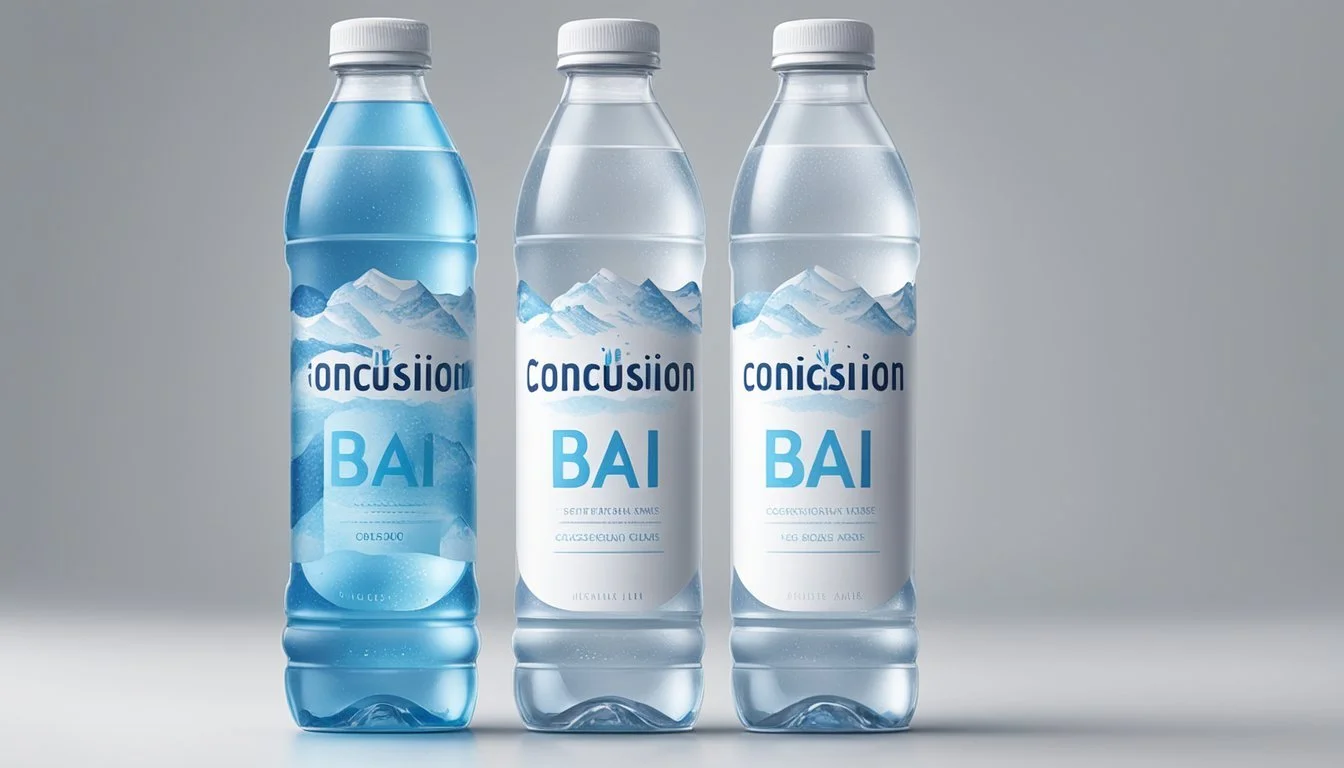Bai vs. Icelandic Glacial
Comprehensive Comparison of Bottled Water Brands
In the world of bottled water, consumers are often faced with a multitude of choices, each claiming to offer something unique. Among the array of options are Bai and Icelandic Glacial, two brands that have garnered attention for their distinct characteristics. Bai, known for its antioxidant infusion and flavorful profiles, stands out for those seeking a beverage with a taste twist. On the other hand, Icelandic Glacial is lauded for its exceptional purity, sourced from the untouched natural springs of Iceland.
The debate between Bai and Icelandic Glacial encompasses factors beyond just taste and origin. Environmental impact, packaging, and health implications are increasingly critical to today's conscientious consumer. Bai's appeal includes added antioxidants such as Vitamin C and natural sweeteners, which caters to those aiming for added health benefits. Icelandic Glacial, meanwhile, prides itself on sustainability, boasting carbon-neutral certification and natural filtration through lava rock which is believed to result in a remarkably clean and balanced water.
Choosing between Bai and Icelandic Glacial, therefore, is not just a matter of personal palate preferences but also involves considering the overall health benefits, environmental responsibility, and the authenticity of the source. As consumers discern the nuances between these bottled waters, the decision ultimately reflects individual values and priorities in hydration choices.
Overview of Bai and Icelandic Glacial
Bai and Icelandic Glacial are two prominent brands in the bottled water industry, each offering distinct characteristics. Bai Water, not traditionally known for plain water, is more noted for its antioxidant infusions and flavorful beverage selections. Bai emphasizes infusions with exotic fruit flavors and additional benefits like antioxidants, aiming to appeal to health-conscious consumers.
In contrast, Icelandic Glacial is a brand that focuses on providing natural spring water. Sourced from the Ölfus Spring in Iceland, this brand is well-regarded for its purity and sustainability. Icelandic Glacial boasts a low mineral content and a naturally alkaline pH level.
Comparatively, other brands in the market offer a variety of options:
Core Hydration is known for its perfectly pH-balanced water, designed to work in harmony with the body’s natural pH.
Smartwater provides vapor-distilled water with added electrolytes for taste.
Essentia markets ionized alkaline water touting better hydration.
Aquafina, Pure Life, and Dasani are examples of purified waters with wide distribution.
Poland Spring offers natural spring water sourced from Maine.
Each brand targets a segment of consumers, from those seeking plain, hydrating water with a clean taste like Icelandic Glacial, to those desiring enhanced beverages with additional health benefits, as seen with Bai's offerings. The variety reflects the diversity of consumer preferences, from spring sources to purified options, each brand positioning itself uniquely in the bottled water market.
Nutritional Comparison
In analyzing Bai and Icelandic Glacial bottled waters, one must consider pH levels and electrolyte content as these factors are crucial in determining their impact on health.
pH Levels and Health Implications
Bai bottled water typically has a pH level that is slightly acidic. This means that it may not be the best choice for those seeking to maintain an alkaline diet or those with certain health conditions that require them to avoid acidic substances.
Icelandic Glacial, on the other hand, boasts a pH of 8.4, indicating that it is alkaline. Alkaline water can neutralize acid in the bloodstream, leading to potential health benefits such as improved metabolism and increased energy.
Electrolyte Content and Benefits
Electrolytes are minerals with an electric charge, important for hydration and various bodily functions.
Bai: Contains added electrolytes, primarily for taste. This can offer a quick replenishment of essential minerals lost through sweat and support hydration.
Icelandic Glacial: The mineral content is naturally occurring due to the water filtering through volcanic rock. Its electrolytes include:
Calcium
Magnesium
Potassium
Sodium
These electrolytes contribute to muscle function, nerve signalling, and overall cellular health. The presence of these minerals in Icelandic Glacial can provide a natural source of hydration and electrolyte balance.
By considering pH levels and the presence of electrolytes, consumers can make an informed decision about which bottled water is better suited for their health and hydration needs.
Taste Profiling
When choosing bottled water, the taste is a primary factor for consumers. Subtle differences can significantly influence preference and overall satisfaction.
Bai Water Taste Experience
Bai water is known for its enhanced flavors, typically infused with fruit essences and sweetened with plant-based sweeteners. They offer a variety of tastes, ranging from bold and fruity to mild and refreshing. Consumers often select Bai for its antioxidant infusion and distinct flavor options that stand apart from traditional flat water.
Icelandic Glacial Taste Experience
Icelandic Glacial, on the other hand, provides a pure, clean taste associated with its origins from Iceland’s natural springs. Filtering through ancient lava rocks adds a unique mineral balance that slightly alkalizes the water. Consumers appreciate the smooth, crisp profile with minimal aftertaste, aligning with those who prefer a more traditional water taste without additional flavoring.
Hydration Effectiveness
When considering hydration straightforwardly, Bai and Icelandic Glacial offer distinct benefits due to their unique compositions. Bai beverages are infused with antioxidants and vitamins, which can contribute to overall health, but it’s the water content that is primarily responsible for hydration.
Icelandic Glacial, on the other hand, provides natural spring water. Its purity and naturally occurring minerals can enhance hydration by replenishing electrolytes that are lost through sweat.
Below is a comparative analysis of their hydration potential:
Aspect Bai Icelandic Glacial Main Hydration Agent Water combined with other ingredients Pure spring water Electrolyte Content Low, not focused on electrolyte replenishment Naturally occurring electrolyte balance pH Level Varies per flavored drink Alkaline, which may aid in hydration
Each drink has elements that are essential for hydration:
Bai offers a flavorful alternative to plain water, potentially encouraging increased fluid intake for those who might not enjoy the taste of regular water. However, it's important to note that ingredients added for flavoring do not necessarily improve hydration more than water would.
Icelandic Glacial brings forth a high pH and naturally occurring minerals, which may be more effective for quick rehydration. Its alkalinity is touted by some as beneficial for hydration, although opinions on alkaline water's health benefits vary.
While both products can contribute to staying hydrated, Icelandic Glacial appears to be designed with direct hydration in mind. Bai, with its added flavors and ingredients, targets a different market seeking taste as well as refreshment.
Environmental and Ethical Considerations
When assessing Bai versus Icelandic Glacial in the realm of bottled water, environmental and ethical factors are pivotal.
Icelandic Glacial touts an impressive environmental reputation. The company operates a facility powered entirely by geothermal and hydroelectric energy, emphasizing its commitment to sustainable practices. They claim to be the world's first carbon-neutral bottled water for both product and operations. Its source, Iceland's natural water, is renowned for purity and low mineral content.
Aspect Bai Icelandic Glacial Power Source Unknown Geothermal & Hydroelectric Carbon Footprint Unknown Carbon Neutral Source Global ingredients Natural springs in Iceland
In contrast, less information is publicly available about Bai's environmental endeavors. Bai's products are not solely water; they include flavored beverages with additional ingredients. While Bai does focus on low-calorie counts and antioxidant infusion, the sourcing and ethical implications of their global ingredients remain less clear.
Both companies have an obligation to maintain ethical sourcing and production standards. Consumers often look for not only the health benefits and taste of their water but also the impact their purchase has on natural water resources and the broader environment.
As consumers become more environmentally conscious, the sustainability of bottled water is increasingly scrutinized. Icelandic Glacial's transparency in sustainability could set a benchmark for other bottled water companies, including Bai, to follow.
Price and Accessibility for Consumers
When comparing Bai and Icelandic Glacial bottled waters, price and accessibility are two aspects that consumers frequently consider.
Bai offers a range of fruit-flavored water beverages that generally include antioxidants from coffee fruit and white tea extract. The brand is known for its variety of flavors and antioxidant infusion. Here is a general price range for Bai products:
Single Bottle (18 fl oz): $2.19 - $2.69
Pack of 12 (18 fl oz each): $21.48 - $26.28
Prices for Bai can vary widely depending on the retailer, sales, and location. Bai products are often found in many grocery stores, convenience stores, and online platforms like Amazon, making them widely accessible to consumers looking for enhanced water with a flavor twist.
In contrast, Icelandic Glacial is a premium natural spring water known for its purity and origin from the Ölfus Spring in Iceland. Icelandic Glacial water is naturally alkaline and rich in minerals. Approximate costs are as follows:
Single Bottle (500 ml): $2.29 - $2.79
Pack of 24 (500 ml each): $37.99 - $45.99
It was mentioned in one of the search results that Icelandic Glacial can be more difficult to find in certain areas, which might be a consideration for consumers prioritizing convenience.
Each brand offers different benefits in terms of product offerings which may appeal to different consumer preferences. Icelandic Glacial is positioned as a more premium choice, whilst Bai offers a flavor-rich and antioxidant-packed alternative. The brands distribute through both physical and online stores, but availability may vary depending on the region.
Brand Reputation and Trust
Bai and Icelandic Glacial stand out in the bottled water market for their distinctive qualities and consumer trust. Bai is known for its antioxidant-infused beverages, which include flavors derived from exotic fruits. The company positions itself as a provider of healthy, flavorful hydration options. Their reputation is built upon creating products that appeal to health-conscious consumers looking for low-calorie, yet enjoyable drinks.
On the other hand, Icelandic Glacial is recognized for its environmental initiatives and exceptional purity. This brand sources its water from the Ölfus Spring in Iceland, and is certified as carbon neutral due to its sustainable production practices and commitment to offsetting carbon emissions associated with transportation. Consumers trust Icelandic Glacial for its natural purity and sustainability efforts.
Consumer reviews reflect loyalty to both brands:
Bai:
Positive attention for its range of flavors
Preferred by those seeking healthy, flavorful drinks
Icelandic Glacial:
High regard for its environmental commitment
Praised for its natural purity and clean taste
Trust in Icelandic Glacial is bolstered by numerous positive reviews, asserting their commitment to delivering a clean product. Similarly, Bai's unique value proposition has earned it a faithful customer base that values both taste and health benefits.
Both brands, through their business practices and product offerings, have cultivated a strong sense of trust with their consumers. They maintain their reputations through consistency in quality and by upholding their respective brand promises.
Conclusion
When considering Bai and Icelandic Glacial for bottled water choices, consumers have distinct options based on their preferences. Bai offers antioxidant infusion and flavorful options while Icelandic Glacial is known for its purity and natural origin.
Bai: Enhanced with antioxidants; flavor varieties available.
Icelandic Glacial: Pure, naturally alkaline water; sustainable packaging.
Individuals seeking taste and added health benefits might prefer Bai. In contrast, those prioritizing minimalistic, pure water from a natural source might lean towards Icelandic Glacial.
Water should be chosen not only based on taste but also on one’s hydration needs and environmental impact. Icelandic Glacial's commitment to carbon neutrality might influence environmentally conscious consumers, coupled with its reputation for high purity levels.
For better hydration, consumers might consider the following tips:
Assess individual hydration needs.
Consider lifestyle and personal health goals.
Factor in the environmental sustainability of the product.
In essence, the better bottled water is subjective and will depend on the consumers' personal values and requirements for hydration and taste.

